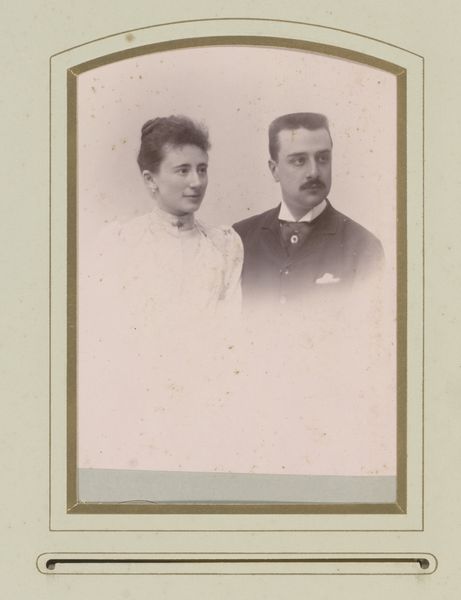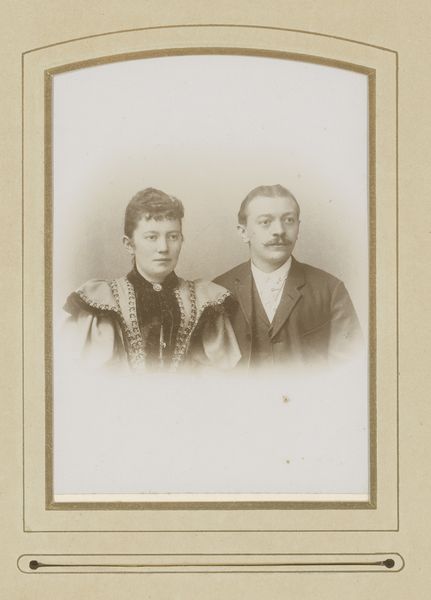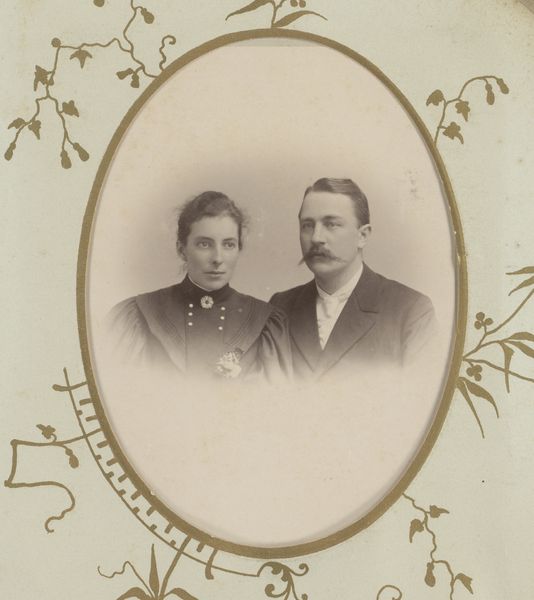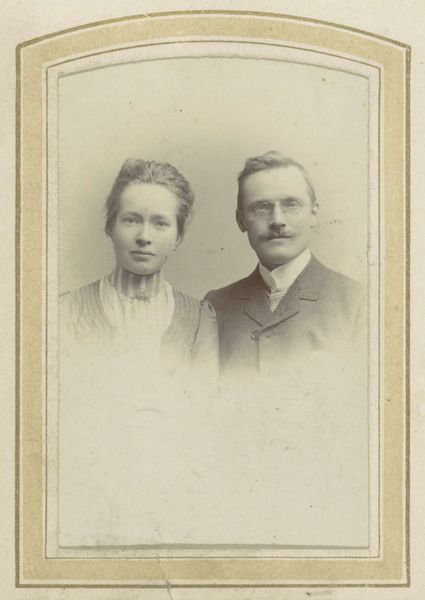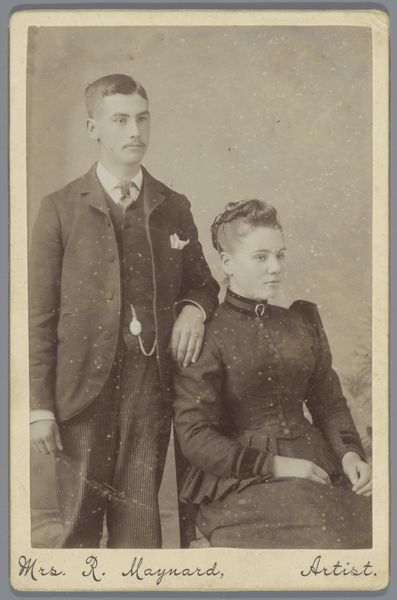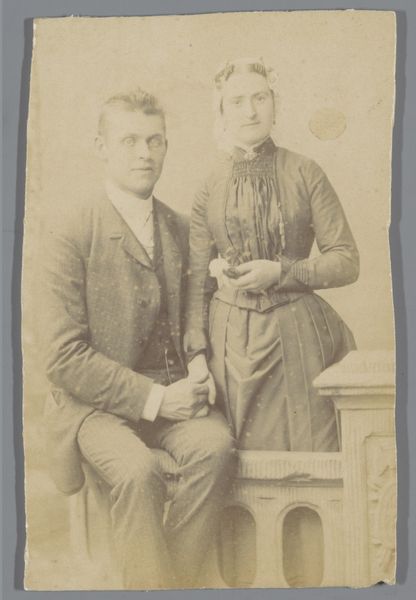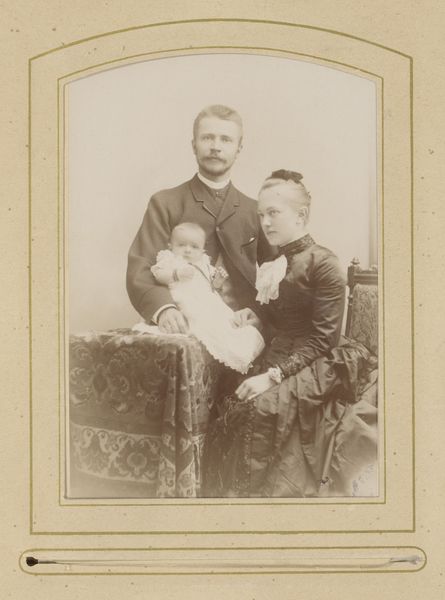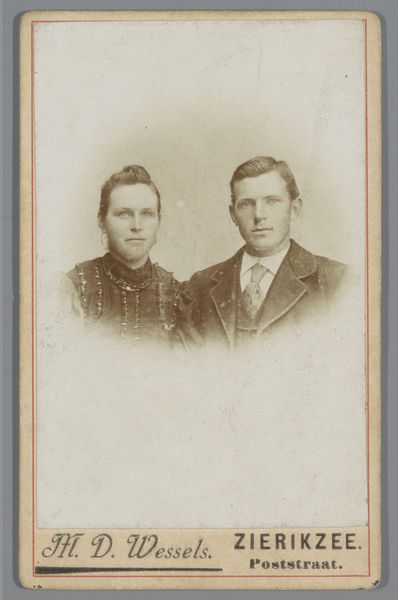
Portret van een man met een strik en een vrouw met een hooggesloten kraag c. 1866 - 1900
0:00
0:00
photography
#
portrait
#
photography
#
historical photography
#
genre-painting
Dimensions: height 90 mm, width 58 mm, height 103 mm, width 64 mm
Copyright: Rijks Museum: Open Domain
Curator: The first thing that strikes me is how utterly still they both are. An almost unsettling composure in the sepia tones. Editor: Indeed. We’re looking at a photographic portrait, likely a carte-de-visite, entitled "Portrait of a Man with a Bow Tie and a Woman with a High-Neck Collar." It was created sometime between 1866 and 1900 by Johan Christiaan Reesinck. The rigidity you observe was partially the reality of early photography. Longer exposure times demanded subjects remain motionless. Curator: That forced stillness certainly reinforces the formal, almost ritualistic presentation of the pair. It’s more than just a picture; it’s an enactment of societal roles, wouldn't you agree? Editor: Absolutely. The attire and pose are highly symbolic. The man in his formal suit with the precise bow tie, and the woman in her demure high-necked dress are clearly presenting themselves in a manner befitting their social station and their understanding of propriety in late 19th century. Curator: The hand he places on her shoulder; such a simple gesture yet layered with implication! He, offering a level of protection, the woman perhaps duty bound, her agency perhaps ceded at least visually? These gestures become almost archetypal within such a constrained visual field. Editor: Or consider the evolution of portraiture and the rising middle class; photography becomes a means of mimicking aristocratic portraiture at a fraction of the price, reinforcing new social structures. This portrait then, becomes a marker of aspiration, a bid for respectability, rather than solely a statement of established power. Curator: A democratization of the symbolic language, if you will? The way a medium like photography allowed everyday citizens to project very specific ideals of domesticity and personal worth... Editor: Precisely! Curator: That gives me so much more to think about the next time I see old portraits; all the silent performances, of the roles played. Editor: And perhaps we're only scratching the surface when discussing what's represented by photographs like these, of people from another era striving for permanence.
Comments
No comments
Be the first to comment and join the conversation on the ultimate creative platform.
